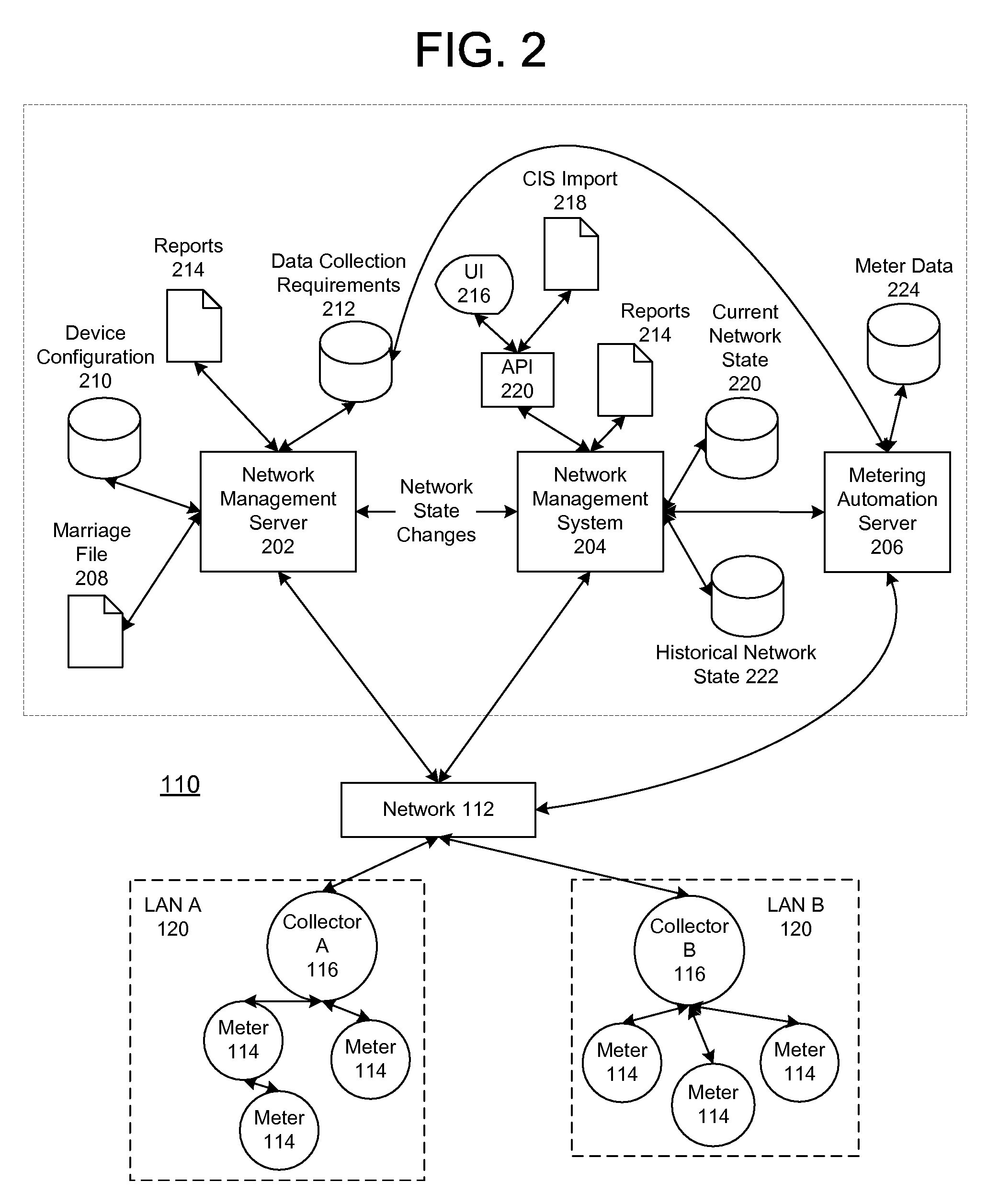Wakeup and interrogation of meter-reading devices using licensed narrowband and unlicensed wideband radio communication
a meter-reading device and radio communication technology, applied in power management, instruments, sustainable buildings, etc., can solve the problems of metering system operators not having the necessary time or the financial capital to build a new wireless network, located too far away from transmitting metering data, and requiring a significant investment of financial capital. , to achieve the effect of broader bandwidth, short time, and high bitra
- Summary
- Abstract
- Description
- Claims
- Application Information
AI Technical Summary
Benefits of technology
Problems solved by technology
Method used
Image
Examples
Embodiment Construction
[0026]Exemplary systems and methods for gathering meter data are described below with reference to FIGS. 1-9. It will be appreciated by those of ordinary skill in the art that the description given herein with respect to those figures is for exemplary purposes only and is not intended in any way to limit the scope of potential embodiments.
[0027]Generally, a plurality of meter devices, which operate to track usage of a service or commodity such as, for example, electricity, water, and gas, are operable to wirelessly communicate. One or more devices, referred to herein as “collectors,” are provided that “collect” data transmitted by the other meter devices so that it can be accessed by other computer systems, such as a metering automation server (MAS). The collectors receive and compile metering data from a plurality of meter devices via wireless communications. A metering automation server may communicate with the collectors to retrieve the compiled meter data, and communicate with c...
PUM
 Login to View More
Login to View More Abstract
Description
Claims
Application Information
 Login to View More
Login to View More - R&D
- Intellectual Property
- Life Sciences
- Materials
- Tech Scout
- Unparalleled Data Quality
- Higher Quality Content
- 60% Fewer Hallucinations
Browse by: Latest US Patents, China's latest patents, Technical Efficacy Thesaurus, Application Domain, Technology Topic, Popular Technical Reports.
© 2025 PatSnap. All rights reserved.Legal|Privacy policy|Modern Slavery Act Transparency Statement|Sitemap|About US| Contact US: help@patsnap.com



